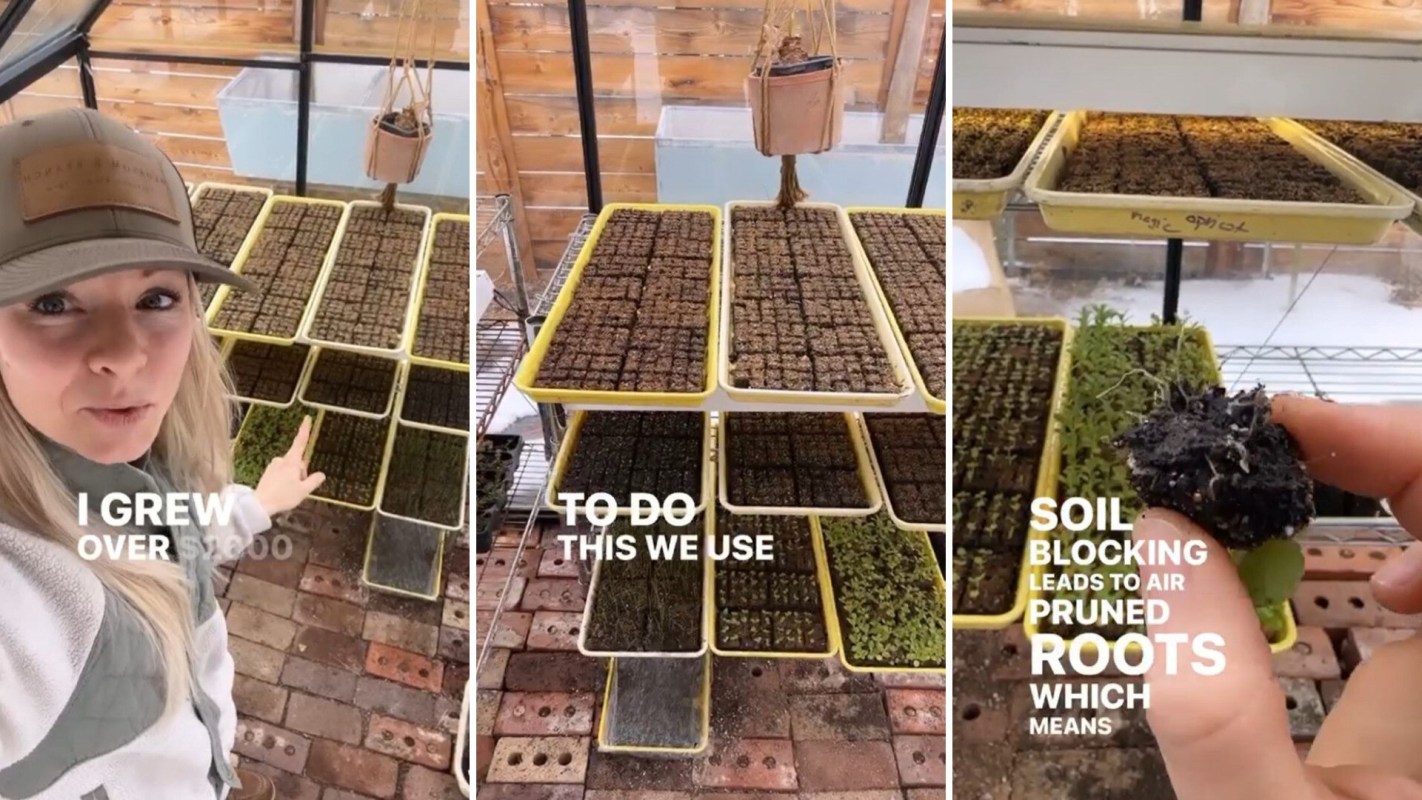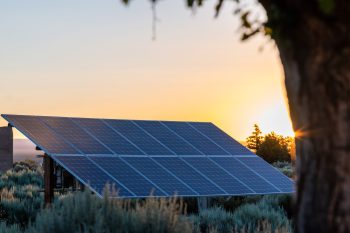Many gardeners rely on pre-grown seedlings to start their garden beds each year — but according to this Instagrammer, that choice can actually be a mistake.
Her alternative costs less than one-eighth of the price — and it's better for the environment.
The scoop
Instagram channel Growing with Nature (@blossomandbranchfarm) posted a recent video about "soil blocking." This technique involves making your own compact cubes of soil and using them to start seeds.
To do this, all you need is a tool called a soil blocker, seeds to plant, trays to set the blocks on, and some suitable soil for growing.
"Each of these trays holds 320 seedlings which means we can start over 5,000 seedlings just on this one wire shelf," the Instagrammer narrates. "To buy this many plants even at wholesale, I'd have to buy 33 trays of 125 plants at around $60 apiece — and you have to pay for shipping."
In all, Growing with Nature spent just $300 — and produced $2,600 worth of seedlings.
How it's helping
Soil blocking is an incredible way to save money, but the video also claims that it's better for your garden.
"Soil blocking leads to air-pruned roots which means less transplant shock and healthier plants," the narration states.
Nature and Garden says that a plant experiencing transplant shock may display "wilting or falling leaves, dying branches, abrupt fall of flowers or fruit, or it might die altogether." This typically happens when a plant is moved, due to three factors: "Physical abuse (bruising and wounds), a reduction in size (roots and branches are cut off), and it ends up in a new environment."
Soil blocking helps minimize this type of trauma because the exposed sides of the block naturally limit root growth, so nothing needs to be removed during the transplant and the block can be gently transferred to the ground. This adds up to fewer dying plants and a more successful garden.
Soil blocking is also ideal for the environment. "Shipping live plants with heavy wet soil often involves a pretty big carbon footprint," says Growing with Nature, referring to the amount of heat-trapping carbon dioxide that burning fuel releases into the atmosphere. "And they're often packaged with a lot of styrofoam."
What everyone's saying
Many commenters were excited to try this method themselves.
"I've been wanting to try soil blocking over starting seeds in containers like I usually do," says Misha Gillingham (@farmluxe). "Do you find that the seedling quickly outgrows the small amount of soil in the block?"
Growing with Nature quickly reassures, "There are multiple sizes depending on your needs."
Join our free newsletter for easy tips to save more, waste less, and help yourself while helping the planet.








